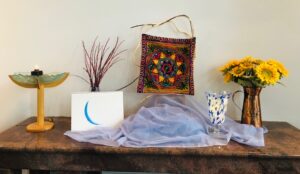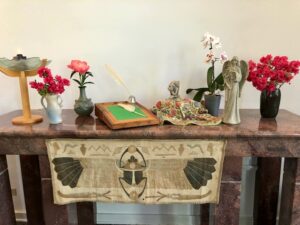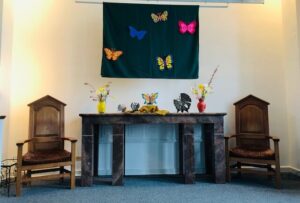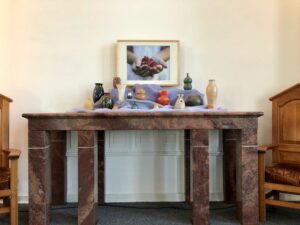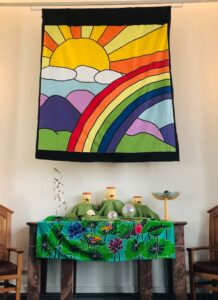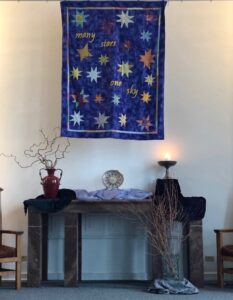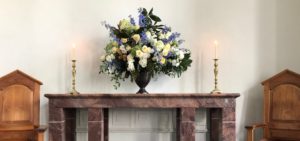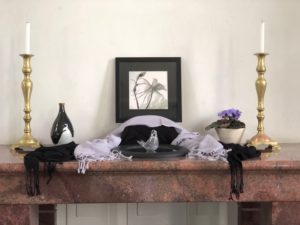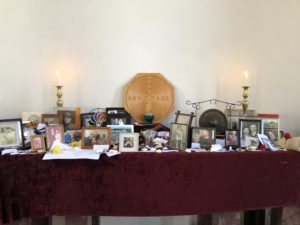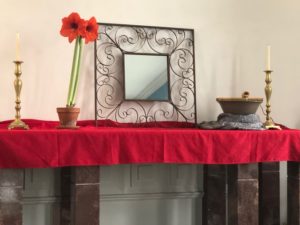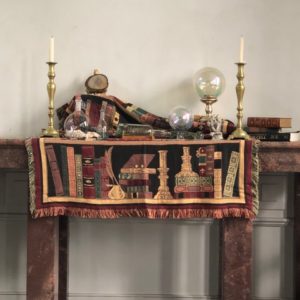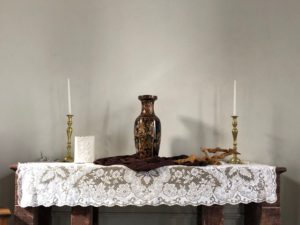I want to tell you something absolutely amazing this morning. Or, to be more precise, I want to tell you aboutsomething absolutely amazing. You might think that I’m going to tell you about the youth who will be bridging in a moment – and you’re right, I could, they are amazing, and the journey that has brought them to this point in their lives has been amazing, and that the journeys that stretch out in front of them will be amazing – but I want to tell you about something else, instead.
In northeast India there’s a region known as Meghalaya. I first heard about Meghalaya several years ago through a video someone pointed me to. A few years back, while trying to refresh my memories for that year’s Bridging service I discovered that this incredible place is only about two and a half hours away from Nongkrem, India, where our Khasi partner church is located. Small world, right? [If you want to know more about Nongkrem, there’s an amazing display in the Social Hall, created by one of our rising 5th Graders, Sarah Colbert.]
What brought Meghalaya to my attention in the first place, as I said, was an online video I was directed to, a clip from a nature show, narrated by the incomparable English actor John Hurt, who died at the beginning of last year. His voice is so distinctive; I’d put it right up there with James Earl Jones and Samuel L. Jackson as the best voice-over voice. Yet great though his voice is, it’s what he was describing that really blew my mind.
Before I tell you about it, though, I want to call to your attention to the metaphor around which this whole service is built – the bridge. Bridges come in all shapes and sizes. All sorts of styles. But whether they’re small or grand all bridges have at least one thing in common: they connect here to there. An apt metaphor, then, for the experience of moving from this time in your life to that; from here to there in life experience … say … a youth graduating from high school and being recognized as a young adult. A big transition. And, I suppose, you could go all Neo and try to jump it … but I think it’s better to use a bridge. Of course some times you can’t quite see the other side, but if you trust the bridge, and those who built it, you know you can keep on moving forward.
And that brings me back to Meghalaya.
Centuries ago the people who live in this region realized that they, too, had need of bridges, and they developed the most extraordinary way of making them. This is the picture on your Order of Service and what you’re seeing here is a bridge that is several hundred years old and is … and here’s the amazing part … alive.
In past years I’ve tried to use words to describe to you this incredible thing – this centuries-old practice of building living bridges, a practice passed down from generation to generation.
Bridges connect here to there. And as those bridges from Meghalaya so clearly demonstrate, the space from here andthere can often be treacherous. There are bridges over troubled water, if you will. And there are bridges that cross seemingly impossible gulfs, chasms so deep that it might seem that, as Mainer’s like to say, “ya can’t get theah from heah.” And as Indian Jones taught many of us so many years ago we won’t always see the bridge we have to cross, yet with faith – faith in the truth that bridges will often appear when things might seem most bleak – as well as the courage that comes with a deep faith in ourselves – we just might find ourselves getting where we want to go, where we need to go, even if we’re not sure how we’re going to go to get there.
Leia gave us earlier the image of a littleboat in a vast, often overwhelming ocean. But when it had friends, companions, it had the courage and the conviction to go anywhere – even past the edge of the world. And let me tell you, those of you who are bridging this morning, it’s a big ole’ ocean out there and you and I really are tiny little boats (no matter how big we may feel from time to time). That’s the bad news. The good news is we’re not alone. Not you, not me, not any of us.
And that might easily have been enough of a message for this day, but I couldn’t get those living bridges out of my head. And that’s because the symbolic bridge you’ll be “crossing” in a few moments will be, in fact, a living bridge made by your advisors and your families and some of the young adults in this congregation who will be welcoming you into their midst. And while not literally beneath your feet there’s another bridge, one that is right now laying out a path for those who will bridge, just as you are today, in years to come.
As Unitarian Universalists, we don’t have a first Communion. We don’t have confirmation. We don’t have bar and bat mitzvahs. We don’t send our young girls and boys out into the bush to come back women and men. Every culture of our human family has developed ways to mark and honor the transitional times which come in every life. And so have we.
With this Bridging Ceremony we say that these youth who will shortly stand before us … we say that you will be considered here youth no longer after you’ve crossed this symbolic bridge. We recognize that you are young adults; that you’ve reached a milestone, a turning point, a transition in your lives and that we, as a community that loves you, recognize this and want to mark and honor this passage.
To our bridgers – and to all of us, really – please remember that you’re not alone on that big ocean, wherever and however you chart your course (even to the edge of the world). And trust that the living bridge that has borne you safe thus far will hold you, and grow stronger as the years go on.
Pax tecum,
RevWik

